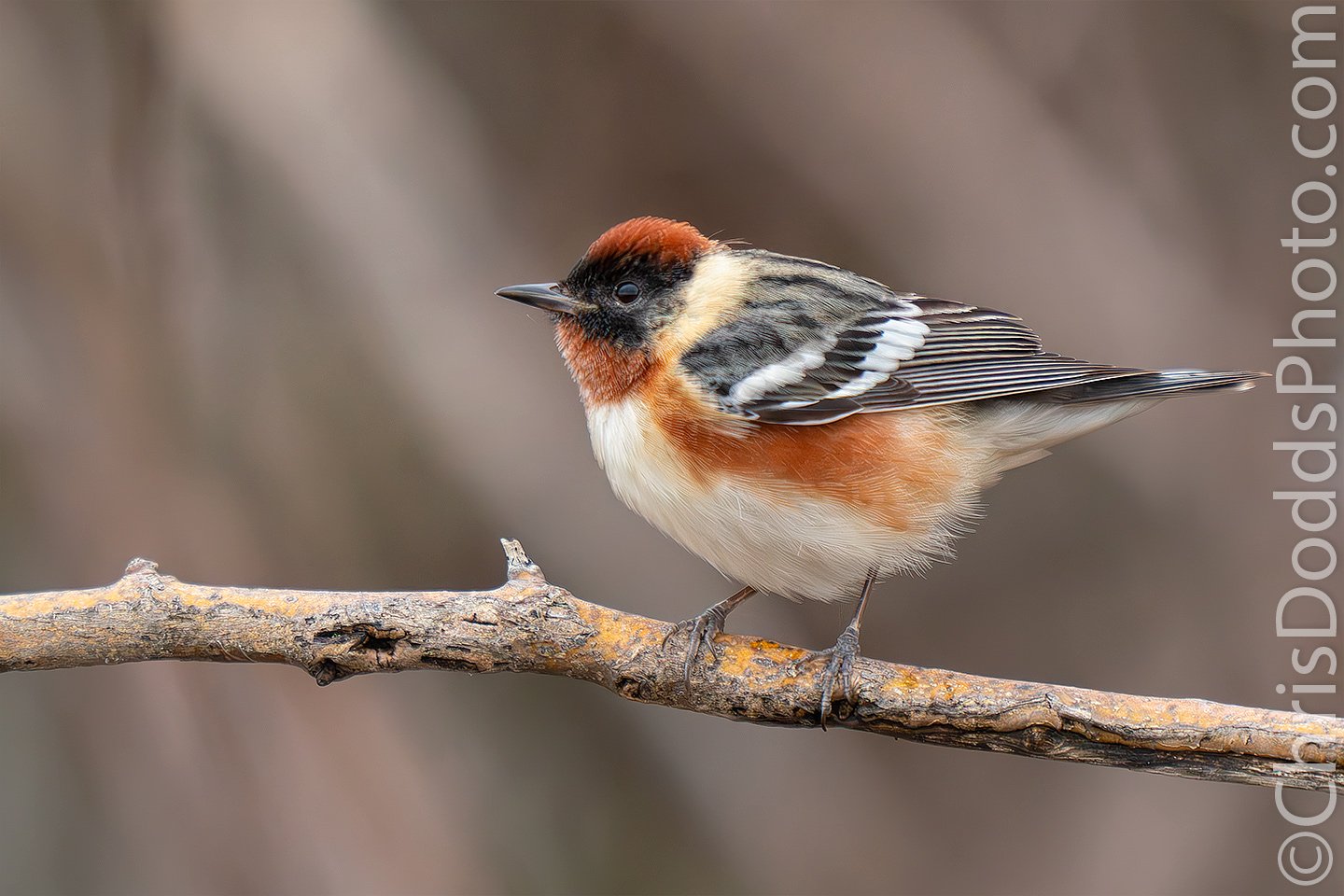Here is a Blackburnian Warbler from a magical morning at Point Pelee during my Songbirds of Pelee Workshop on May 9, 2019. The birding started slowly, but we soon realized it would be an epic morning when warblers began to appear in increasing numbers. There was no legendary “wave” of Warblers, but it did become difficult to isolate just one bird in an image. I just relived that morning as I prepared this image for publication. All of the images before and after this frame include a Bay-Breasted or a Magnolia Warbler - One of those mornings that makes Point Pelee so legendary for spring migration!
I still have room on my Songbirds of Pelee May 7-11 workshop due to a medical emergency last-minute cancellation. Learn more and sign up for my May 7-11 Songbirds of Pelee Workshop HERE.
The only North American Warbler with an orange throat, the Blackburnian Warbler (Dendroica fusca) was named after Anna Blackburne, an English Botanist. The male Blackburinan Warbler's orange throat appears glowing, giving it such previous names as "Firethroat" and "Tourchbird." Bent (1953) wrote, "Blackburnian seems to be a doubly appropriate name, for its upper parts are largely black and its throat burns like a brilliant orange flame amid the dark foliage of the hemlocks and spruces." Favouring Hemlocks, they feed and nest in coniferous trees' upper and outer portions, perhaps to avoid competition with other closely related species. Hidden in dense foliage or Usnea lichen and often as high as 85 feet, Blackburnian Warbler nests are an uncommon victim of Brown-Headed Cowbird parasitism.



















